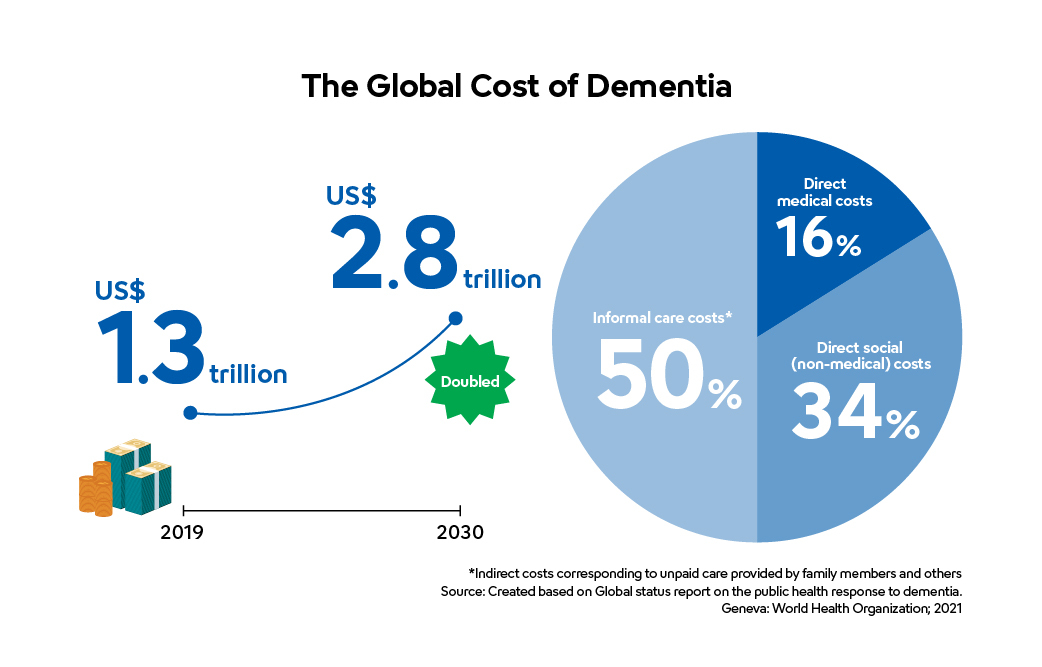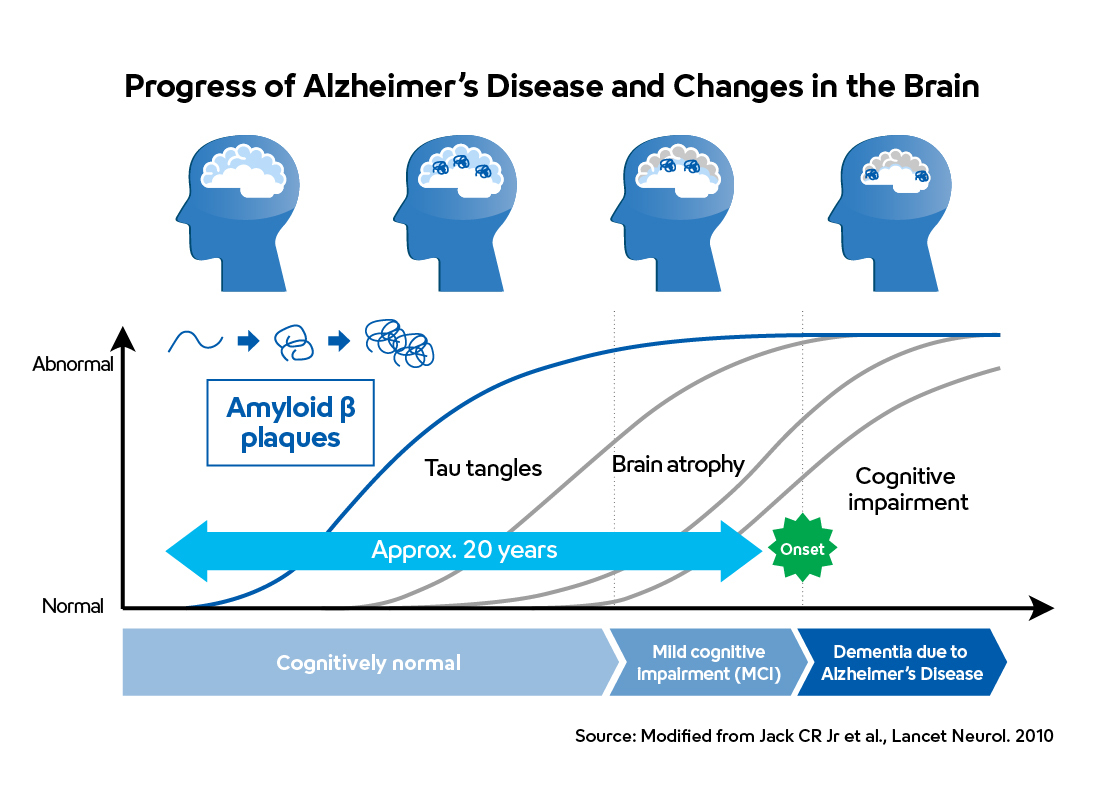Sysmex’s Approach to Dementia
As life expectancies grow longer worldwide, the number of people with dementia is increasing. Dementia is a disease that can affect us all. Carrying out appropriate diagnosis, treatment, and care at an early stage is essential in order to bring about a society in which dementia patients and their families can enjoy active lives, with little or no anxiety. Sysmex is working with a range of partners to develop new testing and diagnostic technologies that will contribute to the early diagnosis of dementia and the creation of better treatment options.
Dementia as a Social Issue
Dementia Cases to Increase to 140 Million by 2050
Over 55 million people worldwide currently suffer from dementia, and as life expectancies grow longer in all parts of the world, this number is expected to rise to nearly 140 million people by 2050.* Dementia is a progressive disease that impairs the patient’s everyday life in various ways, with profound lifestyle, economic, and social implications not just for the patients themselves but also for those around them, such as family members and caregivers.
The Global Cost of Dementia
The World Health Organization (WHO) estimates that with the current increase in the number of patients, the annual global cost of dementia, including medical and care costs, will reach US$2.8 trillion by 2030.* Some 80% of this cost comprised of informal care, such as unpaid care provided by family members and others. Early diagnosis and treatment of dementia have become pressing issues, not only to lessen the burden of the disease on the patients themselves but also to reduce the burden on society in general.

Alzheimer’s Disease: Timely Diagnosis Is Important, as Changes in the Brain Can Progress for Over 20 Years Before Onset
Alzheimer’s disease is responsible for more than 60-70% of dementia cases. The cause is believed to be an accumulation in the brain of a protein called amyloid β (Aβ), which can begin over 20 years before symptoms appear, gradually destroying nerve cells in the brain. Once nerve cells have died, they cannot easily be restored. It is therefore vital to detect accumulation of Aβ in the brain before dementia onset, in order to provide appropriate diagnosis and treatment in a timely manner. Revolutionary new drugs that can slow the progression of the disease by removing the causable substances from the brain have recently been developed, making early detection even more important.

High Hopes for Blood-based Diagnostics
Accumulation of Aβ in the brain can currently be identified by brain imaging (PET scans) or cerebrospinal fluid tests. However, there are issues with these methods as only limited numbers of facilities can perform them, and the procedures are costly and invasive, placing a high burden on patients. There are therefore high hopes for the practical application of blood-based testing methods (blood-based biomarkers), which impose less of a physical burden on patients and can be performed at local healthcare facilities.
Sysmex’s Approach
Supporting Early Diagnosis and Treatment of Dementia through Blood-based Testing and Diagnostic Technologies
Interview with the CTO
Comments from the Developer
- Source:Global status report on the public health response to dementia. Geneva: World Health Organization; 2021.
Related News Releases
- The purpose of the information on this page is to communicate our business activities to our stakeholders. It may or may not include information about Sysmex's products or their research and development, but is not intended for promotion, advertising, or medical advice. The information contained here is current as of January 2024, but may be subject to change without prior notice.



